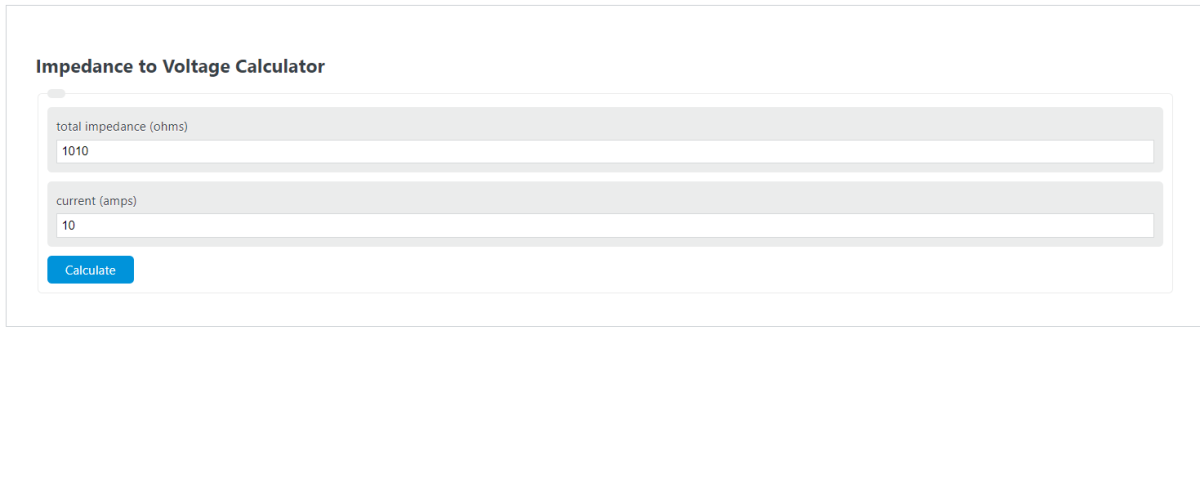Enter the total impedance (ohms) and the current (amps) into the calculator to determine the Voltage From Impedance.
- All Electrical Calculators
- ZS (Earth Loop Impedance) Calculator
- Parallel Impedance Calculator
- Impedance Calculator
Voltage From Impedance Formula
The following formula is used to calculate the Voltage From Impedance.
E = Z * I
- Where E is the Voltage From Impedance (volts)
- Z is the total impedance (ohms)
- I is the current (amps)
To calculate the voltage from impedance, simply multiply the impedance by the current.
How to Calculate Voltage From Impedance?
The following two example problems outline how to calculate the Voltage From Impedance.
Example Problem #1:
- First, determine the total impedance (ohms). In this example, the total impedance (ohms) is measured to be 13.
- Next, determine the current (amps). For this problem, the current (amps) is calculated to be 12.
- Finally, calculate the Voltage From Impedance using the formula above:
E = Z * I
Inserting the values from above and solving the equation with the imputed values gives:
E = 13 * 12 = 156 (volts)
FAQ
What is impedance and how does it affect electrical circuits?
Impedance is a measure of the opposition that a circuit presents to the flow of alternating current (AC). It combines both resistance and reactance (the resistance to changes in current or voltage due to inductors and capacitors in a circuit) into a single measure. Higher impedance means less current flows for a given voltage, affecting the circuit’s performance and the voltage required to drive a specific current through it.
Why is it important to calculate voltage from impedance in electrical systems?
Calculating voltage from impedance is crucial for designing and troubleshooting electrical systems. It helps in determining the correct voltage needed to achieve desired current levels through components with known impedance. This calculation ensures that electrical devices operate efficiently and safely, preventing overvoltage conditions that could damage components or under-voltage conditions that could lead to insufficient performance.
Can the formula for calculating voltage from impedance be used for both AC and DC circuits?
The formula E = Z * I, where E is the voltage, Z is the impedance, and I is the current, is primarily used for AC circuits due to the presence of impedance. In DC circuits, resistance takes the place of impedance, and the formula simplifies to E = R * I, where R is resistance. While the concept is similar, impedance specifically accounts for both resistance and reactance, which only affects AC circuits.
